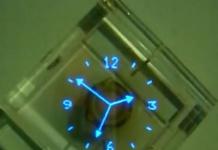Low Harmonic Test Signal Generator on the Wien Bridge
When not at hand quality sine wave generator- how to debug an amplifier that you are developing? You have to use hand tools.
In this article:
- High linearity when using a budget op amp
- Precise AGC for minimal distortion
- Battery Operability: Minimum Interference
background
At the beginning of the millennium, we, as a whole family, went to live in distant lands. Some of my electronic inventory followed us, but, alas, not all. So I found myself face to face with large monoblocks I had assembled, but not yet debugged at all, without an oscilloscope, without a signal generator, with a great desire to complete that project and finally listen to music. The oscilloscope was begged from a friend for temporary use. With the generator, I had to urgently invent something myself. At that time, I was not yet familiar with the component suppliers available here. Of the opamps that happened to be at hand, there were several indigestible products of the ancient Soviet electronic industry, and the LM324, soldered from a burned-out computer power supply.
LM324 datasheet: National/TI , Fairchild , OnSemi ... I love reading datasheets from National - they usually have a lot of interesting use cases. OnSemi in this case also fussed. But "Gypsy" something deprived his followers 🙂
Classics of the genre
Help the author!
This article showed a few simple tricks that allow you to achieve very high-quality generation and amplification of a sinusoidal signal, using a widely used inexpensive operational amplifier and a p-n junction field-effect transistor:
- Limiting the range of automatic level control and reducing the influence of the non-linearity of the regulating element;
- Offset of the output stage of the op-amp in a linear mode of operation;
- Select the optimal virtual ground level for battery operation.
Was everything clear? Did you find anything new, original in this article? I will be pleased if you leave a comment or ask a question, as well as share the article with your friends on a social network by clicking on the corresponding icon below.
Supplement (October 2017) Caught on the web: http://www.linear.com/solutions/1623 . Made two conclusions:
- There is nothing new under the sun.
- You would not be chasing, pop, for cheapness! I would have taken a normal op-amp then - and I would have received an exemplary low Kg.
This entry was posted in , by . Bookmark the .
Comments VKontakte
254 thoughts on Low Harmonic Test Signal Generator on the Wien Bridge”
This site uses Akismet to fight spam.
A simple and fairly reliable voltage converter can be made in just an hour, while not having special skills in electronics. To make such a voltage converter was prompted by user questions related to. This converter is quite simple, but had one drawback - the operating frequency. In that scheme, the output frequency was much higher than the mains 50 Hertz, this limits the scope of the PN. The new converter is free from this shortcoming. It, like the previous converter, is designed to increase automotive 12 volts to the level of mains voltage. In this case, the master oscillator of the converter generates a signal with a frequency of about 50 Hertz. The above circuit can develop an output power of up to 100 watts (during experiments up to 120 watts). The CD4047 chip is very widely used in electronic equipment and is quite cheap. It contains a multivibrator-self-oscillator, which has a control logic.

A choke and a capacitor are used at the output of the transformer, the pulses after the filter already become similar to a sinusoid, although they are rectangular on the gates of the field switches. The power of the converter can be increased many times if you use a driver to amplify the signal and several pairs of output stages. But you need to consider that in this case you need a powerful power source and, accordingly, a transformer. In our case, the converter develops more modest power.
The assembly was done on a breadboard solely for demonstrating the circuit. A 120 watt transformer was already available. The transformer has two completely identical 12 volt windings. To obtain the indicated power (100-120 watts), the windings must be rated for 6-8 Amperes, in my case the windings are rated for a current of 4-5 Amperes. The mains winding is standard, 220 volts. Below are the parameters of the PN.



Input voltage - 9 ... 15 V (nominal 12 Volts)
Output voltage - 200...240 Volts
Power - 100...120W
Output current frequency 50...65Hz



The scheme itself does not need to be explained, since there is nothing special to explain. The value of the gate resistors is not critical and can deviate over a wide range (0.1-800 ohms).
The circuit uses powerful N-channel field switches of the IRFZ44 series, although more powerful ones - IRF3205 can be used, the choice of field workers is not critical.


Such a converter can be safely used to power active loads in case of mains voltage failures.
During operation, the transistors do not overheat, even with a load of 60 watts (an incandescent lamp), the transistors are cold (during long-term operation, the temperature does not rise above 40 ° C. If desired, you can use small heat sinks for keys.
List of radio elements
| Designation | Type | Denomination | Quantity | Note | Score | My notepad |
|---|---|---|---|---|---|---|
| multivibrator | CD4047B | 1 | To notepad | |||
| VT1, VT2 | MOSFET transistor | IRFZ44 | 2 | To notepad | ||
| R1, R3, R4 | Resistor | 100 ohm | 3 | To notepad | ||
| R5 | Variable resistor | 330 kOhm | 1 | To notepad | ||
| C1 | Capacitor | 220 nF | 1 | To notepad | ||
| C2 | Capacitor | 0.47uF | 1 | To notepad | ||
| Tr1 | Transformer | 1 |
The proposed sine wave test tone generator is based on a Wien bridge, produces very low sine wave distortion, and operates from 15 Hz to 22 kHz in two sub-bands. Two levels of output voltages - from 0-250 mV and 0-2.5 V. The circuit is quite simple and is recommended for assembly even by inexperienced radio amateurs.
Audio Generator Parts List
- R1, R3, R4 = 330 ohm
- R2 = 33 Ohm
- R5 = 50k dual potentiometer (linear)
- R6 = 4.7k
- R7 = 47k
- R8 = 5k potentiometer (linear)
- C1, C3 = 0.022uF
- C2, C4 = 0.22uF
- C5, C6 = 47uF electrolytic capacitors (50v)
- IC1 = TL082 double op amp with socket
- L1 = 28V/40mA lamp
- J1 = BNC connector
- J2=RCA Jack
- B1, B2 = 9V Krone

The circuit above is quite simple, and is based on a TL082 dual op-amp, which is used as an oscillator and buffer amplifier. Approximately according to this type, industrial analog generators are also built. The output signal is sufficient even for connecting 8 ohm headphones. In standby mode, the current consumption is about 5 mA from each battery. There are two of them, 9 volts each, since the power supply of the op-amp is bipolar. Two output connectors of different types are installed for convenience. For super-bright LEDs, 4.7k resistors R6 can be used. For standard LEDs - 1k resistor.

The waveform shows the actual appearance of the 1 kHz output signal from the generator.

Generator Assembly
The LED serves as an on/off indicator for the device. Regarding the L1 incandescent lamp, many types of light bulb were tested during the assembly process and all worked well. Start by cutting the PCB to the right size, etching, drilling and assembling.

The case here is semi-wooden - semi-metal. Cut two pieces of wood about a centimeter thick for the sides of the cabinet. Cut off a piece of 2mm aluminum plate for the front panel. And a piece of white matte cardboard for the scale dial. Bend two pieces of aluminum to form battery holders and attach them with screws to the sides.
The 555 integrated timer chip was developed 44 years ago, in 1971, and is still popular today. Perhaps no microcircuit has served people for so long. What they didn’t collect on it, they even say that the number 555 is the number of options for its application :) One of the classic applications of the 555 timer is an adjustable rectangular pulse generator.
This review will describe the generator, the specific application will be next time.
The board was sent sealed in an antistatic bag, but the microcircuit is very oaky and static cannot kill it so easily. 
Mounting quality is normal, the flux is not washed 

The generator circuit is standard for obtaining a duty cycle of pulses ≤2 
The red LED is connected to the generator output and at a low output frequency it blinks.
According to Chinese tradition, the manufacturer forgot to put a limiting resistor in series with the top trimmer. According to the specification, it must be at least 1 kOhm so as not to overload the internal key of the microcircuit, however, in reality, the circuit also works with less resistance - up to 200 Ohm, at which generation is disrupted. It is difficult to add a limiting resistor to the board due to the layout of the printed circuit board.
The operating frequency range is selected by the installed jumper in one of four positions
The seller indicated the frequencies incorrectly. 
Really measured generator frequencies with a supply voltage of 12V
1 - from 0.5Hz to 50Hz
2 - from 35Hz to 3.5kHz
3 - from 650Hz to 65kHz
4 - from 50kHz to 600kHz
The lower resistor (according to the scheme) sets the duration of the pulse pause, the upper resistor sets the pulse repetition period.
Supply voltage 4.5-16V, maximum output load - 200mA
The stability of the output pulses on the 2nd and 3rd ranges is low due to the use of capacitors made of ferroelectric ceramics of the Y5V type - the frequency creeps away not only when the temperature changes, but even when the supply voltage changes (and at times). I did not draw graphics, just take my word for it.
On other ranges, the pulse stability is acceptable.
That's what he gives out on 1 range
At the maximum resistance of trimmers 
In meander mode (upper 300 ohm, lower at maximum) 
In maximum frequency mode (upper 300 ohms, lower to minimum) 
In the minimum duty cycle mode (upper trimmer at maximum, lower trimmer at minimum) 
For Chinese manufacturers: add a 300-390 ohm terminating resistor, replace the 6.8uF ceramic capacitor with a 2.2uF/50V electrolytic capacitor, and replace the 0.1uF Y5V capacitor with a better quality 47nF X5R (X7R)
Here is the completed schematic 
I didn’t remake the generator myself, because. These shortcomings are not critical for my application.
Conclusion: the usefulness of the device is found out when any of your homemade products require you to apply impulses to it :)
To be continued…

The inverter consists of a 50 Hertz (up to 100 Hz) master oscillator, which is built on the basis of the most common multivibrator. Since the publication of the scheme, I have observed that many have successfully repeated the scheme, the reviews are quite good - the project was a success.


This circuit allows you to get almost mains 220 Volts at a frequency of 50 Hz at the output (depending on the frequency of the multivibrator. The output of our inverter is rectangular pulses, but please do not rush to conclusions - such an inverter is suitable for powering almost all household loads, with the exception of those loads that have built-in motor, which is sensitive to the shape of the applied signal.

TV, players, chargers from portable PCs, laptops, mobile devices, soldering irons, incandescent lamps, LED lamps, LDS, even a personal computer - all this can be powered without problems from the proposed inverter.


A few words about the power of the inverter. If you use one pair of power switches of the IRFZ44 series, the power is about 150 watts, the output power is indicated below, depending on the number of pairs of switches and their type
Transistor No. of pairs Power, W)
IRFZ44/46/48 1/2/3/4/5 250/400/600/800/1000
IRF3205/IRL3705/IRL 2505 1/2/3/4/5 300/500/700/900/1150
IRF1404 1/2/3/4/5 400/650/900/1200/1500Max
But that's not all, one of those people who assembled this device unsubscribed with pride that he managed to remove up to 2000 watts, of course, and this is real if you use, say, 6 pairs of IRF1404 - really killer keys with a current of 202 amperes, but of course the maximum the current cannot reach such values, since the leads would simply melt at such currents.

The inverter has a REMOTE function (remote control). The trick is that to start the inverter, you need to apply a low-power plus from the battery to the line to which the low-power multivibrator resistors are connected. A few words about the resistors themselves - take everything with a power of 0.25 watts - they will not overheat. Transistors in a multivibrator need quite powerful ones if you are going to download several pairs of power switches. Of ours, KT815 / 17 is suitable, and even better KT819 or imported analogues.


Capacitors - are frequency-setting, their capacitance is 4.7 μF, with this arrangement of the multivibrator components, the frequency of the inverter will be around 60 Hz.
I took the transformer from an old uninterruptible power supply, the power of the trance is selected based on the required (calculated) power of the inverter, the primary windings are 2 to 9 Volts (7-12 Volts), the secondary winding is standard - network.
Film capacitors, with a rated voltage of 63/160 or more volts, take the one that is at hand.

Well, that's all, I will only add that power switches at high power will heat up like a stove, they need a very good heat sink, plus active cooling. Do not forget to isolate the pairs of one shoulder from the heat sink, in order to avoid short circuit transistors.

The inverter does not have any protection and stabilization, the voltage may deviate from 220 volts.
Download circuit board from server
Best regards - AKA KASYAN



































